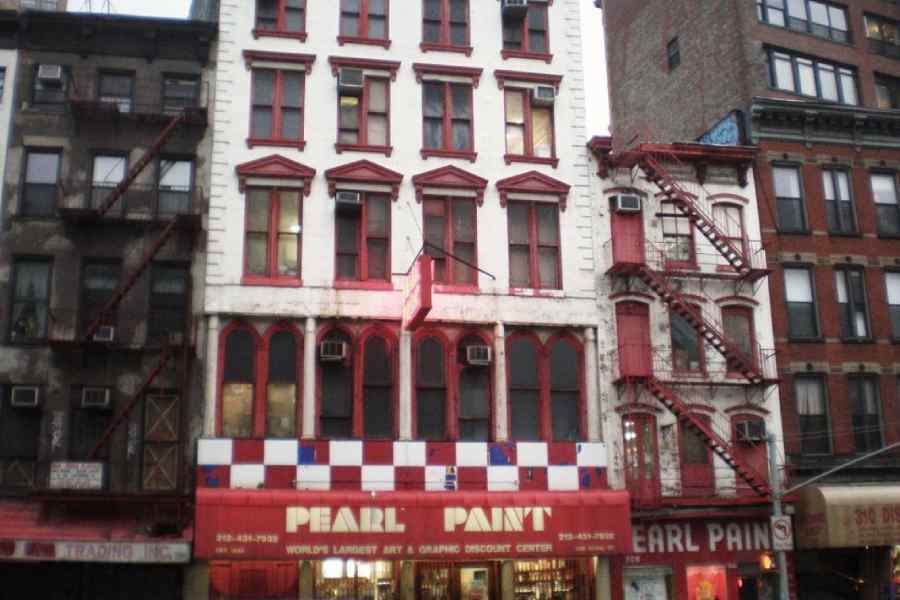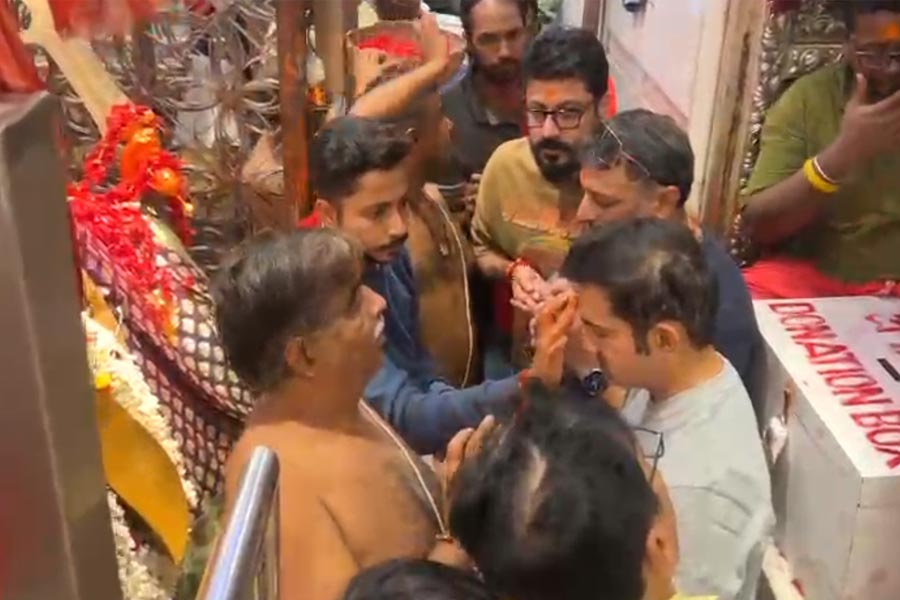Since childhood, art supply stores have provided me with some of my most pleasurable shopping moments. A kindly friend of my parents presented me with a wooden box full of Camel poster colours for my eighth or ninth birthday and, very quickly, I was hooked — to the little glass pots of pigment, to paper, to paintbrushes, and all the other things that went with them. This addiction of over half a century has taken a lot of my money, providing me with much joy without being particularly detrimental to my health. To be strictly accurate, for the first few years, it was my parents’ money; after which it was my turn to feel that peculiar, paint-driven, pecuniary pinch that all artists and wannabe artists know so well. Living in South Calcutta, the most famous art shop in the city was quite far away at Dharmatala; my parents also quickly understood that I was not to be exposed too often to the wide choice of the more expensive material offered by the legendary establishment, not if we were to pay for rent, food and electricity. As a result, one port of call became the small store on the tram rasta, just as you came out of Southern Avenue and headed left towards Tollygunge.
It wasn’t that this shop lacked any of the essentials required by a newbie student of art; it was just that the narrow premises were always crowded and the one counter manned by the fellow with the film-star good looks (a confirmed heart-throb of many a South Cal schoolgirl and, I now realise, probably some schoolboys as well) didn’t allow for slow browsing or considered decisions. You had to know what you wanted; you went in with (usually) your mother; you gave over your list; you got the prices, leading to mother whittling down the list; she paid; you picked up your stuff and were yanked away. Added to this supply of material would be occasional booty brought by kindly friends and relatives who had been to the glorious ‘phoren’. This built up an appreciation of the differences between felt pens and markers from Japan, Germany and America, the quality of the famous British paint brand, the beauty of French Conté pencils and dry pastels. The problem was you tended to hoard this stuff, saving it for ‘important’ paintings, so your most free and best work was often done on local paper with the good old dromedary brand, which later changed its name to Camlin.
Moving to America, the store in my small, rural college in Vermont already knocked me sideways with the art material on its shelves. Fellow students also taking art laughed at me: “This is nothing, man, wait till you get to New York.” Sure enough, on a class trip to look at the galleries in the Big Apple, our art teacher took us on a detour from Soho and Tribeca to nearby Canal Street. There, among the desi-dukaan-like stores with boxes of various goods spilling out onto the sidewalk, he stopped and pointed to a strange establishment: “Okay, people, this is Pearl Paints. It’s probably the best art store in the world. Go in and take a look. There’s five whole floors, so try not to go crazy. Remember, you can always come back, it will still be here.”
When you focussed again on the boxes on the pavement, you realised that instead of underpants, floor cleaners or Chinese woks these contained art products — oversized markers, tubs of gesso, spray paint, wooden bits for constructing canvas frames. Inside was a hyper-gyanjam of more items: one entire floor for oil painting stuff, one for acrylic, sculpture tools on a third, a fourth consisting entirely of inquisitory implements for torturing graphics, whole sections for graphite-related stuff, for paper and drawing surfaces, a hefty bit of real estate devoted to print-making, a section with fifteen kinds of utility knives and so on.
Moving through the shelf-canyons, a young student began to understand a few things: the world was full of people making art (you were not special); there were many ways of making art (drawing/painting could be just a basic stage); producing art cost money (just like making motor-cars); the best stuff for you wasn’t always in the best packaging (though sometimes it was). Walking around Pearl Paints, you would occasionally spot some famous artist, someone already a millionaire but who liked to browse here, same as you (you understood that some people would make it big, others wouldn’t, and it wasn’t always logical).
Navigating past the object-seductions, you kept careful track of your sparse dollars, picking up this essential thing and that small indulgence. In those pre-digital days, the man rang up the cash register (it literally gave off a ring) having double-checked that a bhookha-looking guy like you had the required cash. Later on, living in New York, that pleasurable ring would still be in my ears as I came back to my garret-equivalent and began to work. Many years later, speaking to artists, I understood that browsing and buying familiar or unusual material could be part of the creative process, even for a successful artist who could afford to send assistants on buying trips.
Over the years, I was lucky enough to discover other art stores: there’s the great shop near the British Museum entirely devoted to raw pigments which they mix bespoke for customers; there’s the old one in Paris, on the left bank of the Seine, where Degas and other great 19th-century painters used to shop; there’s the wonderful modern emporium for everything graphic in Berlin where the staff may not all speak English but who are totally on your side — if they see you calculating costs at the cash counter, they will encourage you to drop items (“you are already buying this pen, so you don’t really need that one!”).
Though visiting Europe often, I last made it to America and Pearl Paints over a decade ago. I saw recently that the great treasure-house had shut down, its demise being mourned on Facebook by some of India’s best senior artists. I quickly went and checked my stash of Pink Pearl erasers, the shop’s own brand which have special qualities not found in other rubbers.
At home, too, the game has shifted from physical shops to the internet. A few years ago, when I was bemoaning the lack of some material, an artist friend informed that the best art supplier was based in Calcutta. “Just go on their website, they have the best prices and you should get local delivery.” For a while, this proved to be a boon but then Covid spilled its muddy colour into everything. Luckily, a small but well-stocked art shop I’d been visiting in Chennai had grown into a larger concern. Ordering from them was now a pleasure but, visiting the city, it was even more happy-making to see the shop had expanded into a large store, with two floors and helpful shop assistants. Pearl may have gone, as may have other art stores, but this southern redoubt of brushes, pencils, paints, paper, and many other things was celebrating its fiftieth year.











